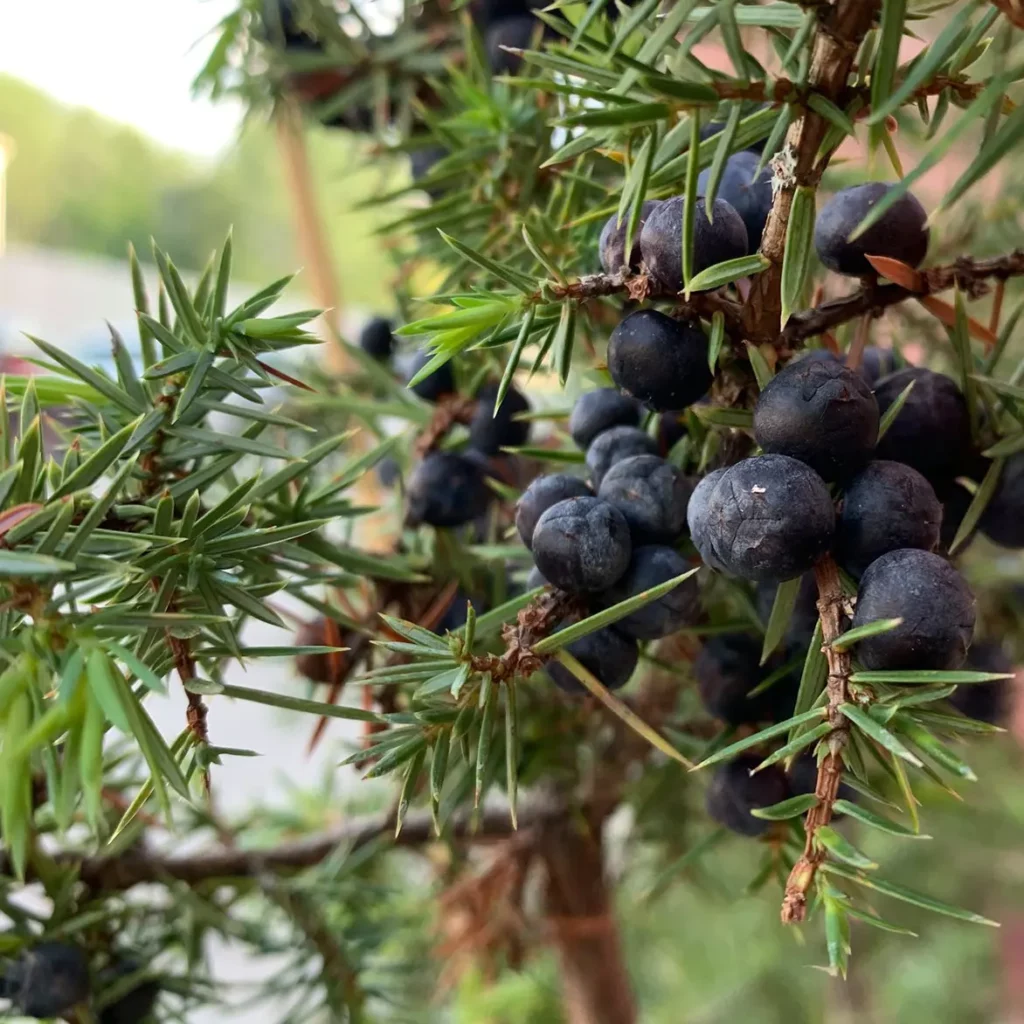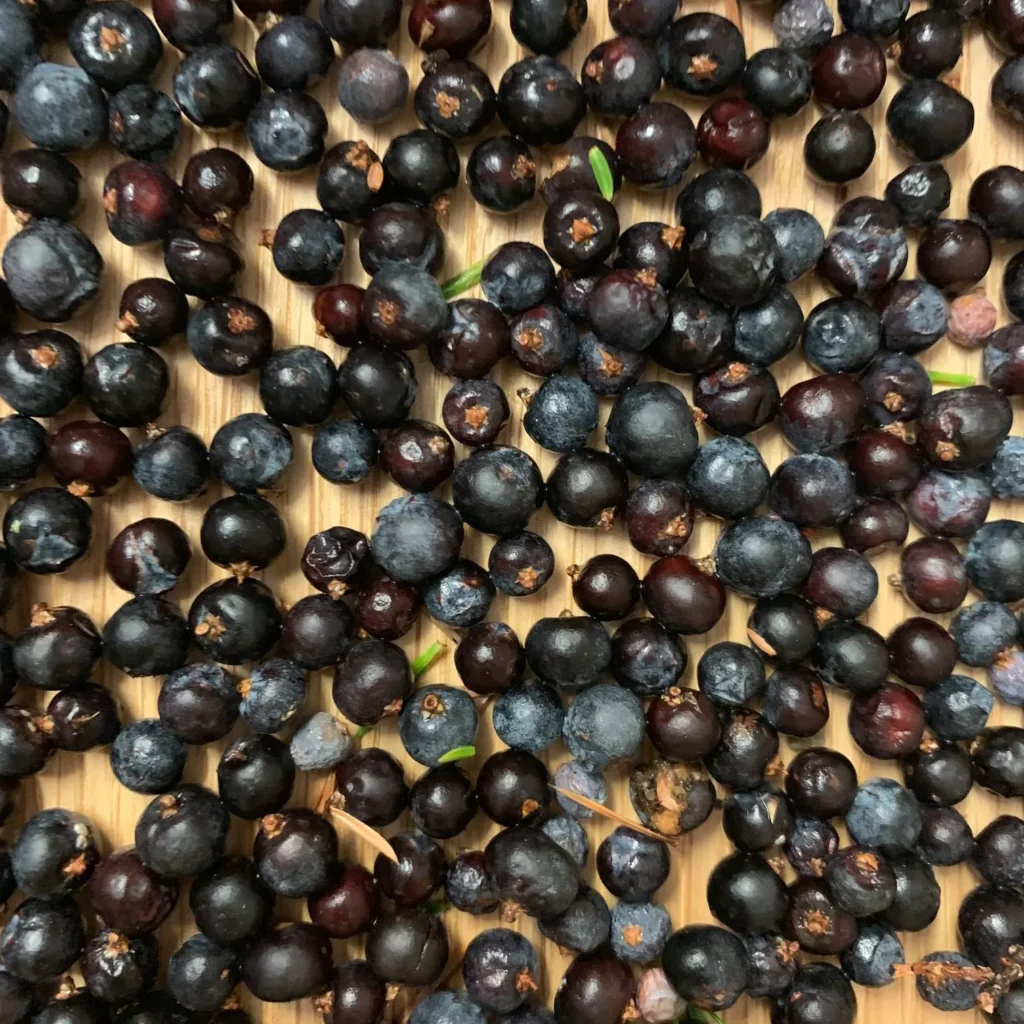VISIT THE FARM

History
CHARACTERISTICS OF COMMON JUNIPER
The common juniper is a conifer that grows in pastures, woods, and arid mountain environments, reaching up to 1500 meters. It appears as an evergreen shrub or small tree with a twisted trunk, and can be between 1 to 10 meters tall, with linear, needle-like and prickly leaves. Only the female plant produces the so-called ‘berries’, which are not fruits but seed cones more accurately called ‘cones’. The male cones are small, cylindrical or oval-shaped yellowish cones producing gametophytes protected in pollen grains. The female ones appear as small cones of greenish color.
Pollination occurs when a grain of pollen lands on a female strobilus; since it is dioecious, two different plants are needed for this to happen. The female plant produces what are known as berries in any case. The seeds mature in the autumn following pollination and are enclosed in a brownish cone called a galbulo (which is more properly the name of the woody seed strobilus of the cypress); scaly and frosty, it consists of 4 fleshy scales fused together containing from 1 to 3 angular seeds rich in an aromatic essential oil.
Due to their appearance, the cones are easily mistaken for berries and are therefore commonly called ‘juniper berries’. They are widely appreciated for their aromatic qualities. The so-called berries or cones are used extensively both in cooking and in the distillation of liquors. In cooking, they are an essential flavoring for game and often for various roasts. Distilled, they are the defining ingredient of gin.


